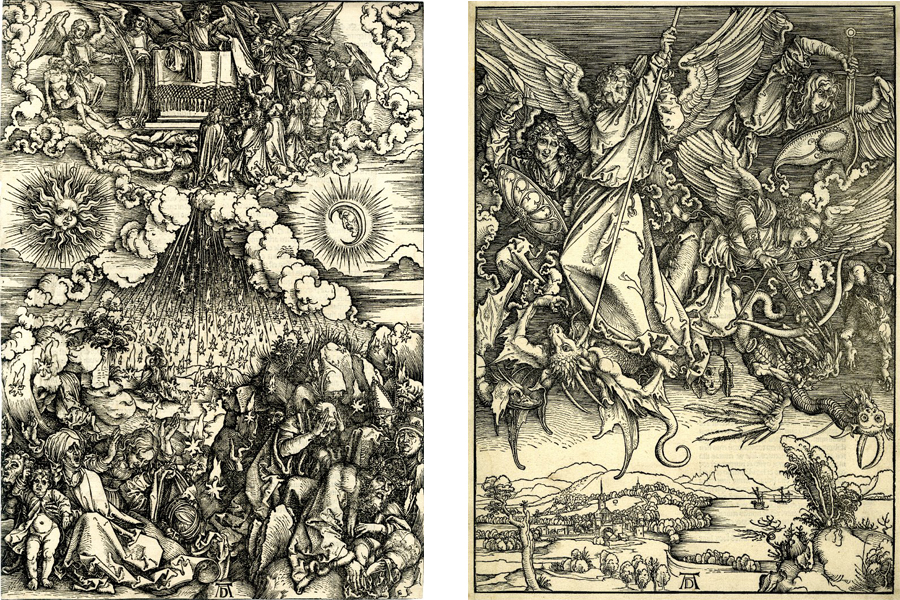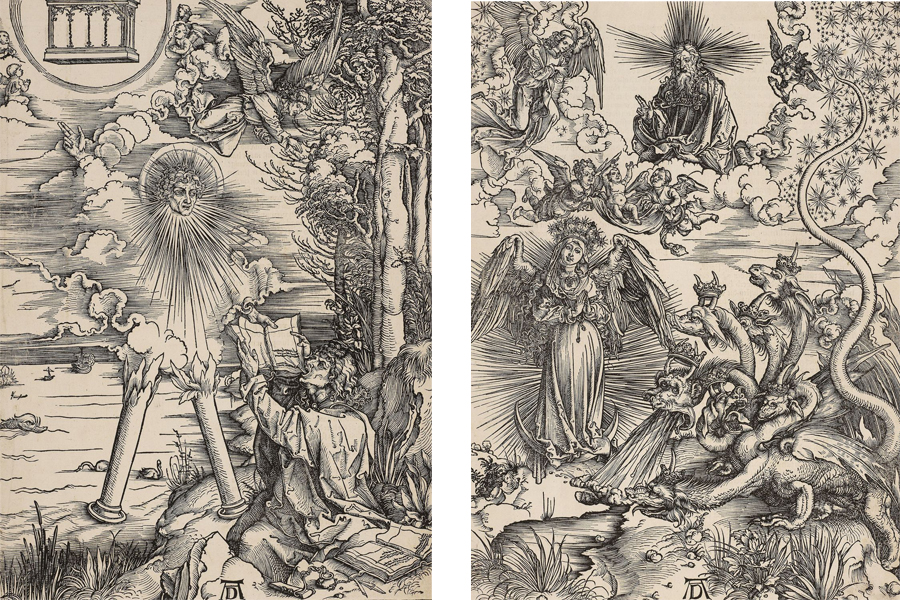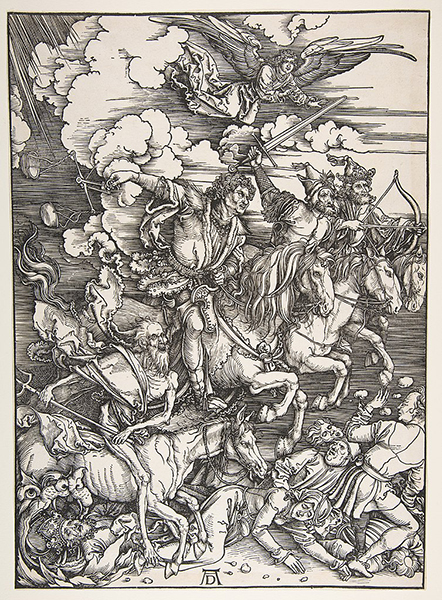Reliving History Through Albrecht Dürer’s Four Horsemen of the Apocalypse
The Medieval period was a time when mankind passed through various formative, and rather difficult stages marked by constant warfare, famine, Black Death, and the rule of the Church. It was a time saturated by superstition, perhaps best imagined and illustrated in the movies such as The Seventh Seal by Ingmar Bergman, and The Devils by Ken Russell.
As the cities were gradually forming, and especially the new class of feuds and wealthy merchants, the need for lavish objects and art in general increased. Throughout that time, monasteries had the leading educational role, while skillful craftsmen started emerging in the Late Middle Ages, in particular associations of artisans called the gilds.
An array of leading masters Renaissance were nurtured in these specific formations, while the artistic development of some was an effect of the family trade. Such was the case with the celebrated German painter, theorist and a pioneering printmaker, Albrecht Dürer (1471 - 1528). This Nuremberg-born figure quickly gained an international reputation, especially for his remarkable woodcut prints. Dürer networked well with other prominent figures at the time such as Italian artists Raphael, Giovanni Bellini and Leonardo da Vinci, well aware of scientific achievements, and he was credited with inventing the basic principle of ray tracing (a technique used in modern computer graphics).
Throughout his fruitful career, the artist produced an array of engravings, altarpieces, portraits, watercolors, and books. Alongside his impeccable Self-portrait (1500), and the ghoulish engraving Knight, Death and the Devil (1513), Dürer is most celebrated for his landmark Apocalypse series produced in 1498 that included his best-known print - The Four Horsemen of the Apocalypse.

The Apocalyptic Vision of Albrecht Dürer
Apocalypse is a series of fifteen woodcuts that feature scenes from the Book of Revelation. These memorable works by Albrecht Dürer published in 1498 were probably cut on pear wood blocks and quickly after release they became popular across Europe.
Dürer started working on the series during his first trip to Italy between 1494 and 1495. The set was published a few years later, in Latin and German, in Nuremberg in 1498, at the height of the European frenzy regarding the end of the world which was to happen in 1500. The layout of this series with the illustrations on the recto and the text on the verso reflect the supremacy of the illustrations over the text.
The second edition was made in a book form around 1511. The print press, as the latest invention of its time, enabled the distribution of the book to the masses which welcomed its subject matter, and found it relevant in regards to the prophecy of the end times.

The Four Horsemen of the Apocalypse
Albrecht Durer's Four Horsemen of the Apocalypse is the third and most famous Apocalypse woodcut based on the last book of the New Testament of the Bible, the Book of Revelation by John of Patmos. At the center of this particular chapter is the scene of a book/scroll in God's hand that is sealed with seven seals. The first four of the seven seals are opened by the Lamb of God/Lion of Judah which summons four entities that ride white, red, black, and pale horses.
The four riders are symbolizing Conquest or Pestilence, War, Famine, and Death. The apocalyptic vision present in Christianity is that the Four Horsemen bring the divine apocalypse upon the world announcing the Last Judgment. The number of horsemen is important since four is the number affiliated with the creation of the earth in the Book of Revelation. The scene also includes a depiction of a wide-jawed creature swallowing a man for which the Apocalypse seems even more crude and powerful than on the other Dürer compositions.
With unprecedented vigor and strength, the artist transformed what was a relatively non-threatening image in previously illustrated examples of these Biblical scenes into an expressive and rather frightening woodcut. Albrecht Dürer's Four Horsemen of the Apocalypse is based on parallel lines between the figures, basic middle tone, volume, and strong diagonal motion; the silhouettes overlap the powerful forms of the horses and riders from left to right.

The Symbolic of Dürer’s Woodcuts in Uncertain Times
The Apocalypse series brought Dürer enormous fame and wealth since they captured the zeitgeist of that time. Although the European social and political landscape surely changed since these woodcuts were first published, their outstanding craftsmanship, the extraordinary interpretation of the Biblical scene and the striking visual vocabulary made them timeless. The series somehow embodied not only the prophetic vision of one of the leading artists of the Northern Renaissance, but they also embodied the artist’s novel approach to storytelling and the use of print.
In the contemporary moment, we can admire Dürer’s skillfulness and modern approach; however, the Apocalypse seems more than alarming with the current state of affairs on a global scale with the coronavirus. This image is to be observed not as the remainder of any prophecies of doomsday that belong to another time, but rather as a symbol of the near danger of the apocalypse entirely caused by the humans who forgot that the planet Earth is not only reserved for them.
Editors’ Tip: The Four Horsemen of the Apocalypse: Religion, War, Famine and Death in Reformation Europe
Using the prism of Dürer's woodcut, The Four Horsemen of the Apocalypse, Andrew Cunningham and Ole Grell offer a new and exciting interpretation of European history in the period 1490 to 1648. Dürer's image came to characterize the outlook of most early modern Europeans, who saw repeated episodes of war, epidemics and famine as indicating the imminent end of the world. Lavishly illustrated with fascinating contemporary images, The Four Horsemen of the Apocalypse brings together religious, social, military and medical history, giving readers a unique insight into the early modern world. Andrew Cunningham is a Welcome Trust Senior Research Fellow in the Department of History and Philosophy of Science in the University of Cambridge.
Featured images: Details of Albrecht Dürer - The Four Horsemen, from The Apocalypse, 1498. Woodcut. Sheet: 15 1/4 x 11 7/16 in. (38.8 x 29.1 cm). Image: 15 1/4 x 11 in. (38.7 x 27.9 cm). Collection Metropolitan Museum of Art.
Can We Help?
Have a question or a technical issue? Want to learn more about our services to art dealers? Let us know and you'll hear from us within the next 24 hours.

